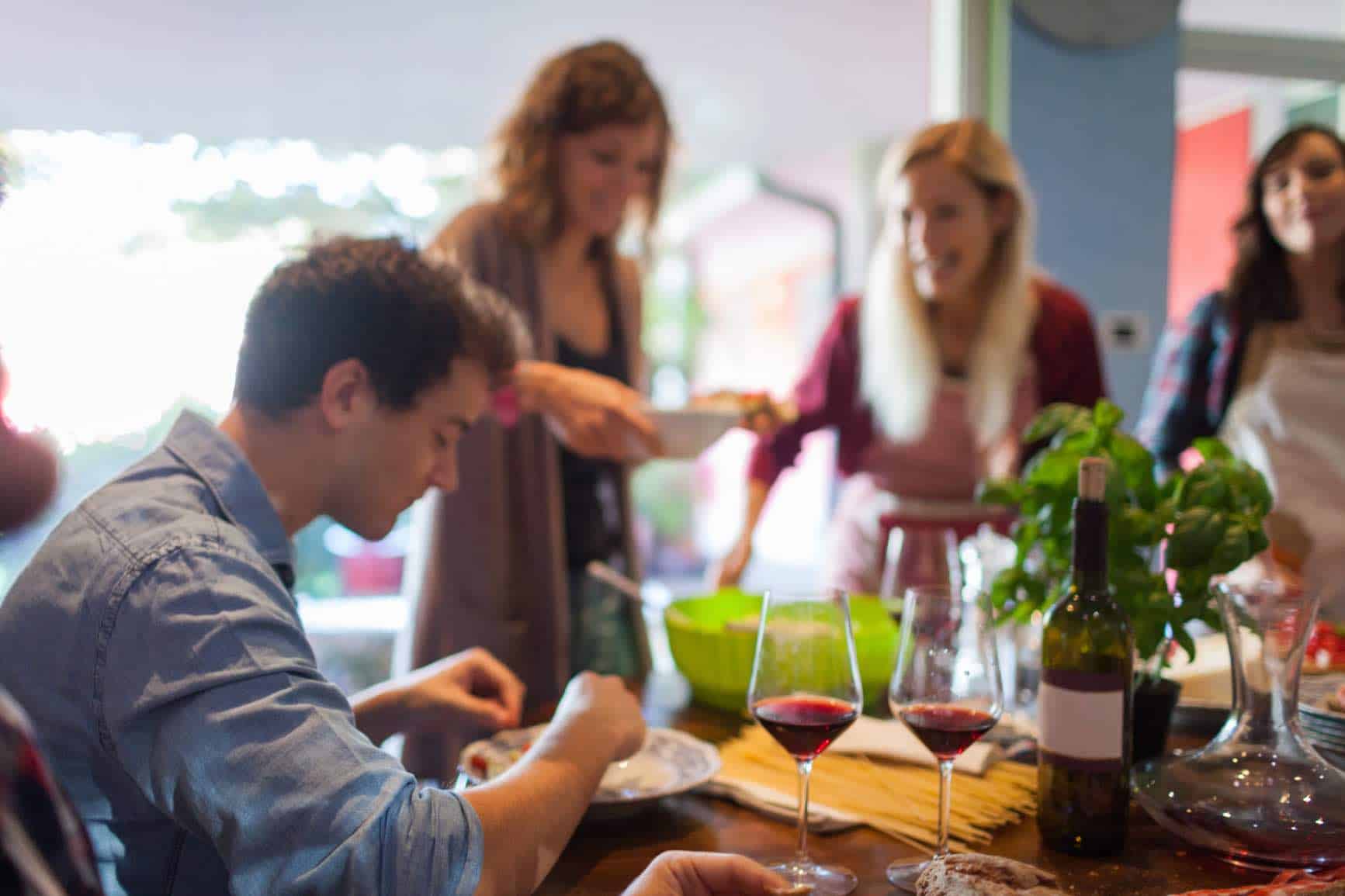How to: Leave a Meal Feeling Perfectly Satisfied

Author: Devon Smolca, MS
Okinawa, Japan, has one of the world’s highest populations of centenarians, people who live to be 100 years old or more. In Okinawa, most people live by the phrase, hara hachi bun me, which translates to “belly 80 percent full”. In western culture, it is common to eat until a feeling of fullness is achieved or exceeded. Hara hachi bu is a way to listen to our bodies and eat until just before that feeling of fullness is attained. Here are some ways to tap into when our bellies feel 80% full and how to still feel 100% satisfied.
- Eat slowly: One method is eating more slowly so that we give our brains a chance to catch up with our stomachs and register that feeling of satiety. Taking deep breaths and putting the fork down between bites, chewing more and really savoring each taste are all methods that can help us slow down and be present with our food and our bodies.
- Practice gratitude: At least 815 million people suffer from “chronic under-nourishment,” hunger. Those of us with access to adequate nutrition are so fortunate, and we can easily take for granted the abundance of food in our lives. Before eating a meal, we can take a brief moment to appreciate the food that’s before us and all the events and people that made it possible for us to have our meal. Sunshine, earth, rain, bees, farmers, truck drivers– there are so many factors that come together for us to simply eat! We have so much to be grateful for. Instead of eating with the mentality of needing to be full, we can alter our thinking and realize that with each bite we are no longer hungry.
- Use smaller vessels: We can decrease our portions by simply using smaller plates, bowls, glasses and even utensils! Small vessels=smaller portions, simple!
- Put away leftovers: We can remove the temptation to keep eating until we are 100-110% full by packaging up our leftovers before eating. This strategy can work at a restaurant or at home. Out of sight out of mind!
- Eat more frequent, smaller meals: If hara hachi bu leaves you feeling hara hungry more quickly, eat smaller meals throughout the day to keep you feeling satisfied. Remember those leftovers from #4? Here’s where they come in handy!
- Make your meal an event: All cultures around the world have beautiful, sensual, flavorful traditional cuisines. When prepared and plated with love and care, food is art and nourishment for our bodies and minds! Meal time can be an event on its own, without the need for other distractions such as TV, phone or computer screens. Gathering our loved ones around the table and simply sharing a colorful meal brings us together and satiates us in other ways. When eating alone, it can be a time to practice self love and care, appreciating who we are by giving ourselves a lovely meal. This is where the 20% comes in. After an eventful meal, our stomachs are 80% full and our minds are 100% satisfied by good company, conversation and appreciation of the abundance in our lives!
(1) Buettner, D. (2010). The Blue Zones: Lessons for Living Longer From the People Who’ve Lived the Longest. Washington, DC: National Geographic Society.
(2) 2018 World Hunger and Poverty Facts and Statistics.(2018). https://www.worldhunger.org/world-hunger-and-poverty-facts-and-statistics/

